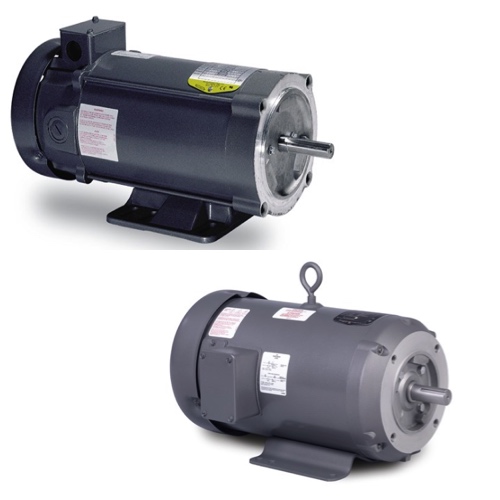Fractional HP Motors

Fractional horsepower motors are electric motors that provide less than one horsepower. They're typically used for applications that require less power and for devices that must be compact. Despite their size, these motors are essential for an enormous range of residential, commercial, and industrial products.
Compact and lightweight are the two main adjectives applied to fractional horsepower (HP) motors, and for a good reason. They are "compactly built" for practical applications where a motor must be used but the space available is both limited and valuable. Even when a fractional HP motor operates at its limit, as in an automotive HVAC system, its "lightweight" characteristic, almost by nature, can also keep the overall weight of the application to a minimum. Yet, despite their diminutive size, fractional HP motors are still "high performers" and trusted with providing medium to high output levels even under the most intense load conditions.
FAQs
Does a totally enclosed fan cooled fractional HP motor use an AC power supply?
Yes, a totally enclosed fan cooled (TEFC) fractional horsepower motor typically uses an AC power supplies.
Are servo motors and brushless motors ac motors or dc motors?
Servo motors and brushless motors can be either AC or DC motors, depending on their design and application requirements.
What type of ac motor includes coils that produce mechanical energy enough to power a fan?
An induction motor, specifically a squirrel-cage induction motor, includes coils that produce mechanical energy sufficient to power a fan.
Motor Starters, Soft Starters and VFDs
Motor Starters
Motor starters safely start and stop a motor in industrial applications. They are designed with a contactor, overload and circuit protection. They are used when basic motor control is required, where torque on the motor is not a concern and speed control is not needed. The advantages of motor starters include: lower cost, allows for remote operation, allows for monitoring of motor state (with the use of auxiliary contacts) and they are safe and efficient. The disadvantages include: high inrush current that can cause fuses to blow and breakers to trip if the inrush is too high, and the starter will allow a full torque to start the motor which can cause the motor to ramp up to full speed very quickly potentially causing the motor to wear and degrade prematurely.
Soft Starters
Soft starters protect motors from inrush current by gently ramping up the motor to full speed. They provide all of the same functions as a traditional motor starter. The advantages of soft starters include: they are less expensive than a VFD when only startup control is needed, they are a smaller system than a VFD where space is a concern and they prevent unwanted torque upon startup, prolonging the life of the motor. The disadvantages include: they are more expensive than a traditional motor starter and they do not allow for full speed control.
VFDs
A Variable Frequency Drive (VFD) allows for the slow ramp up of a motor during startup and the slowing down of the motor during shutdown. It also allows for full speed control during the entire run cycle of the motor. VFDs provide the same functions as both the traditional motor starters and soft starters. The advantages of VFDs include: full speed control (start, stop and in-between), more custom control and monitoring, energy savings due to efficient motor usage and less wear and tear on the motors. The disadvantages include: they are more expensive and larger than other motor control options and they generate heat that may require fans or AC units.

